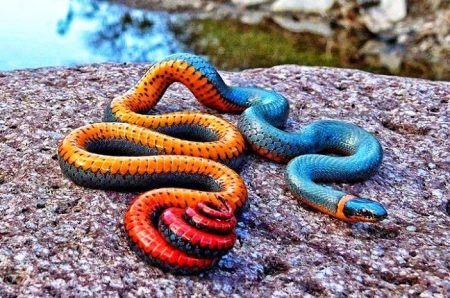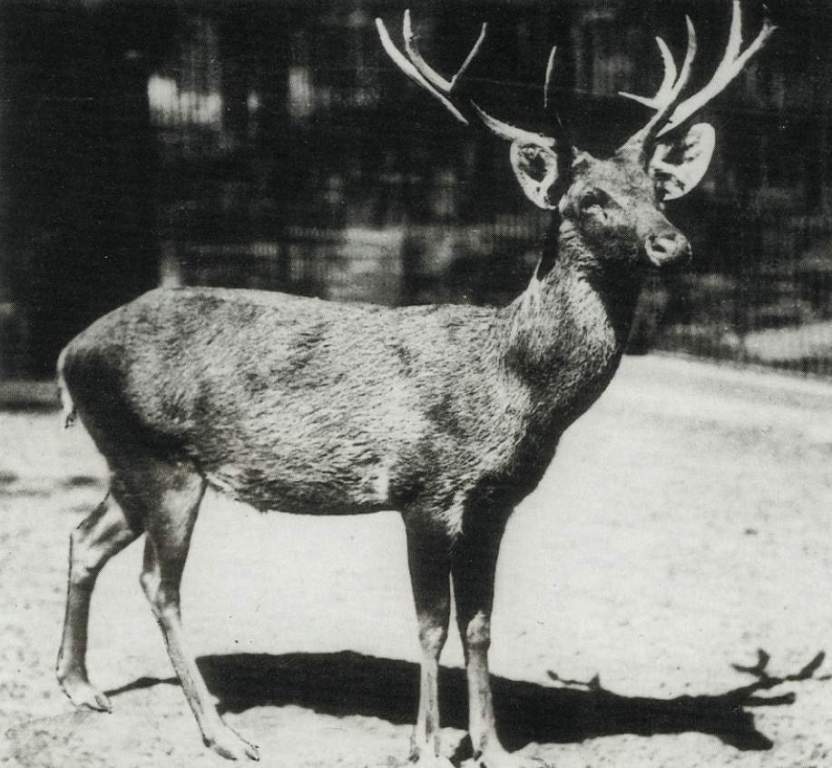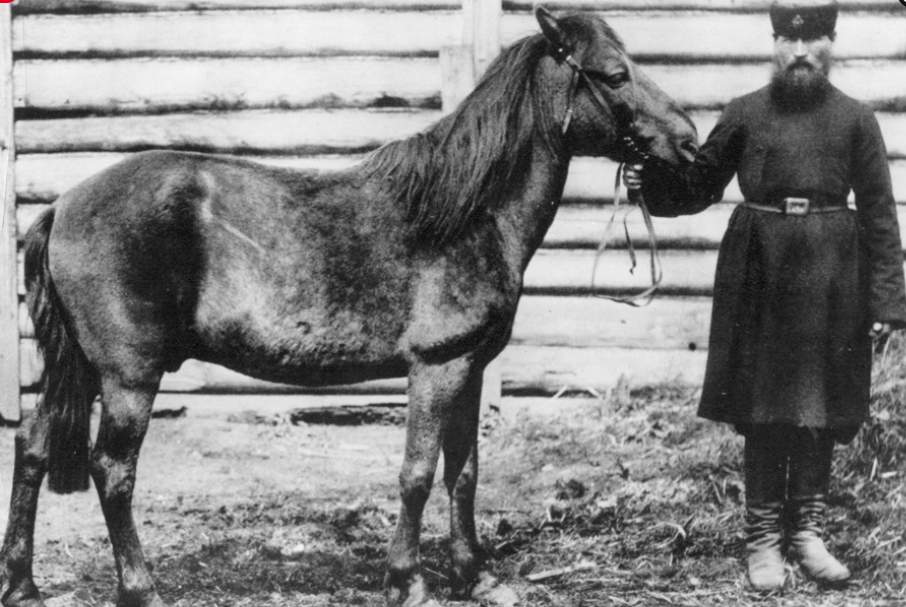The Ring-necked Snake, or Ring-neck Snake, Diadophis punctatus, is a species of colubrid snake found throughout much of the U.S., central Mexico, and southeastern Canada. Ring-necked snakes are secretive, nocturnal snakes, so are hardly seen during the daytime. They’re somewhat venomous, but their nonaggressive nature and small, rear-facing fangs pose a slight threat to humans who want to handle them.
They’re best known for their distinctive defense posture of curling up their tails, exposing their bright red-orange posterior and ventral surfaces when threatened. Ring-necked snakes are assumed to be fairly plentiful throughout most of their range, though no scientific evaluation supports this theory.
Because scientific research is lacking for the ring-necked snake, more in-depth investigations are greatly required. It is the only species within the genus Diadophis, and presently 14 subspecies are identified, but several herpetologists question the morphologically based classifications.
The physical description that describes this snake is the defensive display of a San Bernardino ring-necked snake and is fairly similar in morphology throughout much of their distribution. Its dorsal coloration is solid olive, brown, bluish-gray, or black, broken only by a distinct yellow, red, or yellow-orange neckband.
A few populations in New Mexico, Utah, and other distinctive locations do not have the distinctive neckband. Moreover, individuals may have abridged or partially colored neck bands that are hard to distinguish; coloration may also be more of a cream color slightly than bright orange or red. Head coloration tends to be slightly darker than the rest of the body, with tendencies to be blacker than grey or olive.
This snake exhibits a yellow-orange to red coloration, broken by crescent-shaped black spots along the margins. Certain individuals lack distinct ventral coloration but naturally retain the black spotting. Infrequently, individuals lack both the ventral and neckband coloration, so the use of those two characteristics is the simplest way to distinguish the species.
The snake size also varies across the species distribution. Naturally, adults measure 25–38 cm in length, except for D. p. regalis, which measures 38–46 cm. First-year juvenile snakes are normally about 20 cm and grow about 2–5 cm a year, depending on the developmental stage or resource availability. Ring-necked snakes have flat scales with 15–17 scale rows at the midbody. Males typically have small tubercles on their scales, just anterior to the vent, which are generally absent in females.
Ring-necked snakes are fairly common throughout much of the United States, extending into southeastern Canada and central Mexico. Eastern populations cover the whole Eastern Seaboard, from the Gulf of Saint Lawrence through the Gulf Coast of Texas. Distribution moves inland into northern Minnesota, continuing diagonally through the United States to include all of Iowa, eastern Nebraska, and most of Kansas.
In the western United States, the distribution is meaningfully less continuous, with spotty, distinctive population segments through most of the Pacific Northwest. Populations extend from south-central Washington, continuing along the extreme West Coast into Mexico. Population segments extend inland into western Idaho, through southern Nevada, into central Utah, and continue south through Arizona and central Mexico.
Ring-necked snakes occur in an extensive variety of habitats, as preference is determined by areas with plentiful cover and denning locations. Northern and western species are found within open woodlands close to rocky hillsides or in wetter environments with plentiful cover or woody debris. Southern species exist mainly within riparian and wet environments, particularly in more arid habitats.
In 2003, Stebbins recognized the species as a snake of moist habitats, with moist soil conditions as the preferred substrate. Ring-necked snakes cannot be found above an elevation of 2200 m. In northern regions, dens are also important in classifying suitable ring-necked snake habitats. Dens are typically shared communally and are identifiable by an existing subsurface crevasse or hole deep enough to avoid freezing temperatures.
Since it is a woodland reptile, it can also usually be found under wood or scraps. Because of hot weather, they tend to make holes and burrows, or they hide under rocks or any appropriate material. They are generally found in flatland forests.







